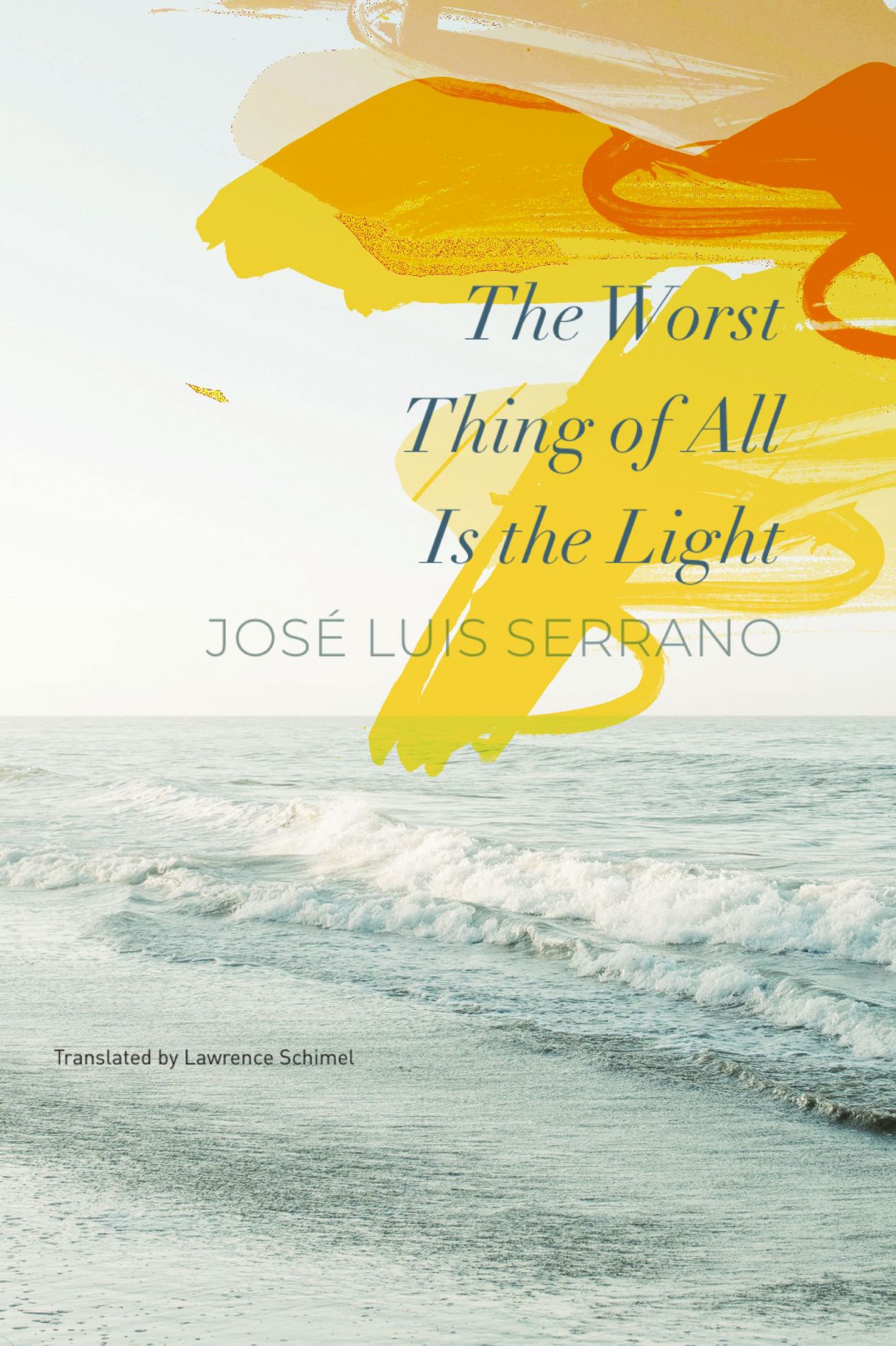 THE WORST THING OF ALL IS THE LIGHT
THE WORST THING OF ALL IS THE LIGHT
by José Luis Serrano
Translated from the Spanish by Lawrence Schimel
Seagull Books. 161 pages, $25.
READERS MIGHT THINK of “metafiction” as a postmodern, 20th-century invention, but it’s a narrative technique with a long history. Two early examples that come to mind are Chaucer’s Canterbury Tales and Laurence Sterne’s Tristram Shandy. Self-aware and self-referential, “breaking the fourth wall” between the work itself and the reader, self-consciously commenting on its own narrative structure and reminding readers that they’re dealing with a manufactured artifact, metafiction seems to take delight in its own artificiality. The technique had something of a heyday in the 1960s: John Barth, Kurt Vonnegut, Robert Coover, Vladimir Nabokov, Thomas Pynchon, among others, all employed metafiction techniques to great acclaim. To the list of great works of metafiction—Pale Fire, Slaughterhouse-Five, The Crying of Lot 49—we can now add José Luis Serrano’s third novel, The Worst Thing of All Is the Light, an astonishing, multi-layered work from 2015, now available in English thanks to Lawrence Schimel’s translation from the Spanish.
On its surface, Serrano’s novel tells two interdependent stories told in separate, alternating chapters. In one narrative, which constitutes the framework of the novel, the narrator (let’s assume, for now, that the narrator is Serrano himself) records and comments on dialogues he has with his (unnamed) husband as they wander from one pueblo to another on a two-week summer holiday in the Basque region of Spain. They discuss sundry matters, primarily Serrano’s plan to write a novel about two heterosexual men, Edorta and Koldo, who share a deep, perplexing love for one another. The second story consists of segments of that novel, diary entries written by Edorta, musing on his relationship with Koldo, which can also be read as unsent missives to Koldo, discussing their relationship and Edorta’s wanting more than the platonic relationship they share. Some of Edorta’s writing closely mirrors Serrano’s, which is not surprising, since Edorta is Serrano’s creation who embodies the experiences, thoughts, longings, and regrets that Serrano imagines during his walking discussions with his husband. As Serrano’s understanding of what he wants to say (and how to say it) grows clearer, Edorta’s writing absorbs and repeats Serrano’s ideas.
There is scant plot in The Worst Thing of All Is the Light. In Serrano’s sections, he and his husband eat and drink their way through various villages and ports in Basque country, lounging on the beaches, bicycling, or taking the train from one town to the next, talking incessantly about the novel in progress, about sexuality, relationships, gender, the different social pressures imposed on straight and gay people, and the nature of love. He tells us about watching fireworks in Bilbao or watching people on the beaches, but other than eating, drinking, walking, and talking, the two don’t really do much of anything.
Similarly, in Edorta’s diary entries, we get his melancholic reminiscences of times that he and Koldo have spent together over the years, adventures they’ve shared, and things they have discussed—or that at least that Edorta has tried to discuss with Koldo. But there is no conventional plotline to follow in Edorta’s writing. He begins each entry with a variation on “The worst thing of all is the light…” The light of November, the light in a locker room, the light in August, the light on the beaches, the light of winter through frosted windows. These different manifestations of light seem to trigger Edorta’s memories of times during their years-long friendship, when he was physically close to Koldo, caressing Koldo as he cried after the death of his mother, smoothing his hair in the rain, watching him as he lay on a beach towel, feeling Koldo’s erection as they wrestled playfully in the schoolyard. Edorta remembers masturbating alongside Koldo as teenagers, while (he tells himself) always thinking of girls. His yearning for a more overtly physical relationship with Koldo is palpable: “I want to kiss you,” he thinks but never says aloud.
Edorta, like Serrano, is trying to parse the nature of an intensely loving relationship between two heterosexual men who both fear being thought of as maricones, Serrano for the sake of finishing his novel, Edorta for clarity about his relationship with Koldo. By the end of the book, Serrano’s and Edorta’s voices become almost indistinguishable in both style and content. “I never write a normal novel,” the narrator tells us early on. “What’s more, I’ve always made it very clear that I’m unable to tell a story.” Is this Serrano himself or a manufactured narrator speaking? Is it genuine modesty or a cunning ploy to accentuate the unconventionality of the novel in hand? The narrator also tells us at one point that his novel will ask a slew of questions but provide no answers. In that regard, The Worst Thing of All Is the Light certainly delivers.
Hank Trout served as editor of A&U: America’s AIDS Magazine.







